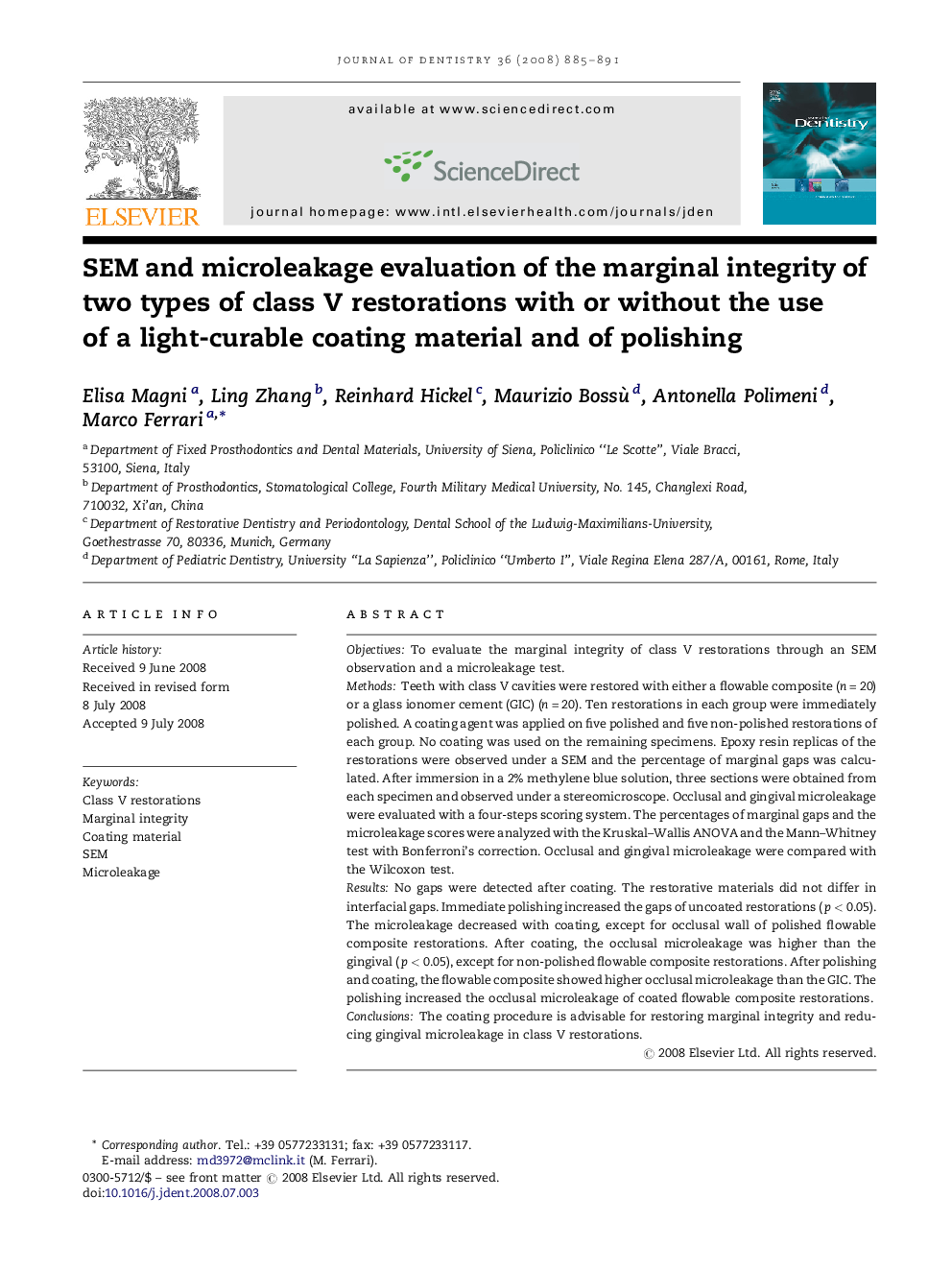| Article ID | Journal | Published Year | Pages | File Type |
|---|---|---|---|---|
| 3146397 | Journal of Dentistry | 2008 | 7 Pages |
ObjectivesTo evaluate the marginal integrity of class V restorations through an SEM observation and a microleakage test.MethodsTeeth with class V cavities were restored with either a flowable composite (n = 20) or a glass ionomer cement (GIC) (n = 20). Ten restorations in each group were immediately polished. A coating agent was applied on five polished and five non-polished restorations of each group. No coating was used on the remaining specimens. Epoxy resin replicas of the restorations were observed under a SEM and the percentage of marginal gaps was calculated. After immersion in a 2% methylene blue solution, three sections were obtained from each specimen and observed under a stereomicroscope. Occlusal and gingival microleakage were evaluated with a four-steps scoring system. The percentages of marginal gaps and the microleakage scores were analyzed with the Kruskal–Wallis ANOVA and the Mann–Whitney test with Bonferroni's correction. Occlusal and gingival microleakage were compared with the Wilcoxon test.ResultsNo gaps were detected after coating. The restorative materials did not differ in interfacial gaps. Immediate polishing increased the gaps of uncoated restorations (p < 0.05). The microleakage decreased with coating, except for occlusal wall of polished flowable composite restorations. After coating, the occlusal microleakage was higher than the gingival (p < 0.05), except for non-polished flowable composite restorations. After polishing and coating, the flowable composite showed higher occlusal microleakage than the GIC. The polishing increased the occlusal microleakage of coated flowable composite restorations.ConclusionsThe coating procedure is advisable for restoring marginal integrity and reducing gingival microleakage in class V restorations.
